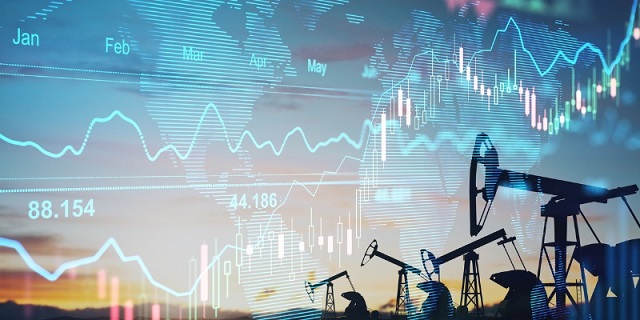Energy
Natural resources remain backbone of Canada’s trade and prosperity

From the Fraser Institute
By Jock Finlayson and Elmira Aliakbari
It’s hard to overstate the importance of energy to our economy. In its latest “scorecard” report, the Coalition for a Better Future notes that “over the past decade, Canada recorded a cumulative trade gap of $130 billion. Had it not been for energy, our trade gap would have been about $1 trillion.” By any measure, the energy sector punches above its weight when paying Canada’s bills.
Canada is a mid-sized economy accounting for roughly 2 per cent of global production. Within North America, we represent less than one-tenth of the collective output of the three national economies. Canada is also an “open” economy that relies on cross-border flows of trade, investment and knowledge to sustain our high living standards.
To pay our way in an unforgiving and very competitive world, Canada must produce and sell exports to customers in other markets. Among other benefits, these exports furnish the financial means to pay for the vast array of imports that enhance the wellbeing of Canadian households and allow many of our businesses to operate efficiently and grow.
In 2022, Canada exported $779 billion of goods to other countries, and $161 billion of services, for a total of $940 billion. About three-quarters of Canada’s exports are destined for a single market—the United States. Canada also sources the bulk of imports from the U.S.
A hard truth about Canada’s trade is the outsized role of natural resource-based products in the export mix. Added together, energy, non-metallic minerals (and related products), metal ores, forest products and agri-food (i.e. food produced from agriculture) comprise roughly half of Canada’s international exports of goods and services—a notably larger share than in other countries with advanced economies (apart from Australia and New Zealand).
Energy alone accounted for 27 per cent of Canada’s merchandise exports in 2022, generating $212 billion for Canadian businesses, workers and governments. Mining contributed $85 billion in export revenues, followed by forest products ($60 billion) and agri-food ($57 billion).
Within the broad energy basket, oil and oil-based products dominate, accounting for more than three-quarters of all energy-based export revenues. Despite innumerable speeches and press releases issued by the federal government, energy’s contribution to Canada’s exports is poised to increase in the next few years—due not to growing exports of “clean tech” goods, carbon-free electricity or hydrogen, but to pending liquefied natural gas (LNG) production in British Columbia coupled with rising volumes of Western Canadian oil shipments following the completion of pipeline expansion projects.
It’s hard to overstate the importance of energy to our economy. In its latest “scorecard” report, the Coalition for a Better Future notes that “over the past decade, Canada recorded a cumulative trade gap of $130 billion. Had it not been for energy, our trade gap would have been about $1 trillion.” By any measure, the energy sector punches above its weight when paying Canada’s bills. The same is true, albeit to a lesser extent, for the other major resource sectors.
Many Canadians, huddled in increasingly unaffordable urban communities that have few evident connections to the country’s natural resource economy, may be puzzled by the continued vital importance of resource extraction and processing to Canada’s prosperity.
Ultimately, any trading country has a ledger showing the trade surpluses and trade deficits of its industry sectors. In Canada’s case, a handful of sectors generate significant trade surpluses, which help finance the large trade deficits incurred in other parts of the economy.
The story is a simple one—positive trade balances in the energy, mining, forestry and agri-food sectors offset chronic—and in some cases fast-growing—trade deficits in consumer goods, chemicals and plastics, motor vehicles/parts, and industrial and electronic goods. Canada also runs a smallish deficit in our overall services trade.
The sectoral trade data are informative. Among other things, they tell us where Canada has a “comparative advantage” in the global context. For a market economy, a pattern of positive trade balances is evidence that it has a comparative advantage in industries that reliably report trade surpluses.
Armed with such information, smart policymakers should create and sustain a business and investment climate that champions and bolsters the commercial success of industries that underpin the export economy. This is a message the Trudeau government has had trouble digesting, perhaps because it relies heavily on the votes of a few large metropolitan areas while most rural and resource-dependent regions remain a political afterthought.
Authors:
Alberta
REPORT: Alberta municipalities hit with $37 million carbon tax tab in 2023

Grande Prairie. Getty Images photo
From the Canadian Energy Centre
Federal cash grab driving costs for local governments, driving up property taxes
New data shows the painful economic impact of the federal carbon tax on municipalities.
Municipalities in Alberta paid out more than $37 million in federal carbon taxes in 2023, based on a recent survey commissioned by Alberta Municipal Affairs, with data provided to the Canadian Energy Centre.
About $760,000 of that came from the City of Grande Prairie. In a statement, Mayor Jackie Clayton said “if the carbon tax were removed, City property taxes could be reduced by 0.6 per cent, providing direct financial relief to residents and businesses in Grande Prairie.”
Conducted in October, the survey asked municipal districts, towns and cities in Alberta to disclose the amount of carbon tax paid out for the heating and electrifying of municipal assets and fuel for fleet vehicles.
With these funds, Alberta municipalities could have hired 7,789 high school students at $15 per hour last year with the amount paid to Ottawa.
The cost on municipalities includes:
Lloydminster: $422,248
Calgary: $1,230,300 (estimate)
Medicine Hat: $876,237
Lethbridge: $1,398,000 (estimate)
Grande Prairie: $757,562
Crowsnest Pass: $71,100
Red Deer: $1,495,945
Bonnyville: $19,484
Hinton: $66,829
Several municipalities also noted substantial indirect costs from the carbon tax, including higher rates from vendors that serve the municipality – like gravel truck drivers and road repair providers – passing increased fuel prices onto local governments.
The rising price for materials and goods like traffic lights, steel, lumber and cement, due to higher transportation costs are also hitting the bottom line for local governments.
The City of Grande Prairie paid out $89 million in goods and services in 2023, and the indirect costs of the carbon tax “have had an inflationary impact on those expenses” in addition to the direct costs of the tax.
In her press conference announcing Alberta’s challenge to the federal carbon tax on Oct. 29, 2024, Premier Danielle Smith addressed the pressures the carbon tax places on municipal bottom lines.
“In 2023 alone, the City of Calgary could have hired an additional 112 police officers or firefighters for the amount they sent to Ottawa for the carbon tax,” she said.
In a statement issued on Oct. 7, 2024, Ontario Conservative MP Ryan Williams, shadow minister for international trade, said this issue is nationwide.
“In Belleville, Ontario, the impact of the carbon tax is particularly notable. The city faces an extra $410,000 annually in costs – a burden that directly translates to an increase of 0.37 per cent on residents’ property tax bills.”
There is no rebate yet provided on retail carbon pricing for towns, cities and counties.
In October, the council in Belleville passed a motion asking the federal government to return in full all carbon taxes paid by municipalities in Canada.
The unaltered reproduction of this content is free of charge with attribution to the Canadian Energy Centre.
Energy
Global fossil fuel use rising despite UN proclamations

From the Fraser Institute
By Julio Mejía and Elmira Aliakbari
Major energy transitions are slow and take centuries, not decades… the first global energy transition—from traditional biomass fuels (including wood and charcoal) to fossil fuels—started more than two centuries ago and remains incomplete. Nearly three billion people in the developing world still depend on charcoal, straw and dried dung for cooking and heating, accounting for about 7 per cent of the world’s energy supply (as of 2020).
At the Conference of the Parties (COP29) in Azerbaijan, António Guterres, the United Nations Secretary-General, last week called for a global net-zero carbon footprint by 2050, which requires a “fossil fuel phase-out” and “deep decarbonization across the entire value chain.”
Yet despite the trillions of dollars already spent globally pursuing this target—and the additional trillions projected as necessary to “end the era of fossil fuels”—the world’s dependence on fossil fuels has remained largely unchanged.
So, how realistic is a “net-zero” emissions world—which means either eliminating fossil fuel generation or offsetting carbon emissions with activities such as planting trees—by 2050?
The journey began in 1995 when the UN hosted the first COP conference in Berlin, launching a global effort to drive energy transition and decarbonization. That year, global investment in renewable energy reached US$7 billion, according to some estimates. Since then, an extraordinary amount of money and resources have been allocated to the transition away from fossil fuels.
According to the International Energy Agency, between 2015 and 2023 alone, governments and industry worldwide spent US$12.3 trillion (inflation-adjusted) on clean energy. For context, that’s over six times the value of the entire Canadian economy in 2023.
Despite this spending, between 1995 and 2023, global fossil fuel consumption increased by 62 per cent, with oil consumption rising by 38 per cent, coal by 66 per cent and natural gas by 90 per cent.
And during that same 28-year period, despite the trillions spent on energy alternatives, the share of global energy provided by fossil fuels declined by only four percentage points, from 85.6 per cent to 81.5 per cent.
This should come as no surprise. Major energy transitions are slow and take centuries, not decades. According to a recent study by renowned scholar Vaclav Smil, the first global energy transition—from traditional biomass fuels (including wood and charcoal) to fossil fuels—started more than two centuries ago and remains incomplete. Nearly three billion people in the developing world still depend on charcoal, straw and dried dung for cooking and heating, accounting for about 7 per cent of the world’s energy supply (as of 2020).
Moreover, coal only surpassed wood as the main energy source worldwide around 1900. It took more than 150 years from oil’s first commercial extraction for oil to reach 25 per cent of all fossil fuels consumed worldwide. Natural gas didn’t reach this threshold until the end of the 20th century, after 130 years of industry development.
Now, consider the current push by governments to force an energy transition via regulation and spending. In Canada, the Trudeau government has set a target to fully decarbonize electricity generation by 2035 so all electricity is derived from renewable power sources such as wind and solar. But merely replacing Canada’s existing fossil fuel-based electricity with clean energy sources within the next decade would require building the equivalent of 23 major hydro projects (like British Columbia’s Site C) or 2.3 large-scale nuclear power plants (like Ontario’s Bruce Power). The planning and construction of significant electricity generation infrastructure in Canada is a complex and time-consuming process, often plagued by delays, regulatory hurdles and substantial cost overruns.
The Site C project took around 43 years from initial feasibility studies in 1971 to securing environmental certification in 2014. Construction began on the Peace River in northern B.C. in 2015, with completion expected in 2025 at a cost of at least $16 billion. Similarly, Ontario’s Bruce Power plant took nearly two decades to complete, with billions in cost overruns. Given these immense practical, financial and regulatory challenges, achieving the government’s 2035 target is highly improbable.
As politicians gather at high-profile conferences and set ambitious targets for a swift energy transition, global reliance on fossil fuels has continued to increase. As things stand, achieving net-zero by 2050 appears neither realistic nor feasible.
Authors:
-

 Brownstone Institute17 hours ago
Brownstone Institute17 hours agoThe Most Devastating Report So Far
-

 Economy1 day ago
Economy1 day agoCOP 29 leaders demand over a $1 trillion a year in climate reparations from ‘wealthy’ nations. They don’t deserve a nickel.
-

 Censorship Industrial Complex21 hours ago
Censorship Industrial Complex21 hours agoAnother Mass Grave?
-

 ESG4 hours ago
ESG4 hours agoCan’t afford Rent? Groceries for your kids? Trudeau says suck it up and pay the tax!
-

 Alberta20 hours ago
Alberta20 hours agoMAiD In Alberta: Province surveying Albertans about assisted suicide policies
-

 Energy1 day ago
Energy1 day agoOttawa’s proposed emission cap lacks any solid scientific or economic rationale
-

 Alberta1 day ago
Alberta1 day agoOn gender, Alberta is following the science
-

 International5 hours ago
International5 hours agoElon Musk praises families on X: ‘We should teach fear of childlessness,’ not pregnancy





